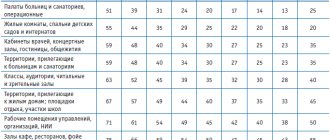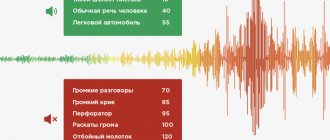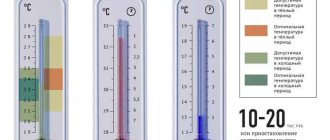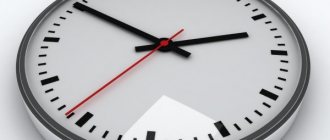The health and well-being of citizens is what laws are made for. Maintaining a normal noise level in houses, in adjacent areas, in the workplace - all this is regulated by relevant laws and informative legal acts. Loud sounds and living in constant noise greatly deteriorate a person’s quality of life and gradually damage his health. It is the noise level that is controlled by law, and exceeding the standards entails punishment. Every citizen should have an understanding of the noise standards that are prescribed by law in order to assert their rights to peace and quiet.
Rules of law
Free legal consultation
Everyday life is not complete without noise. It accompanies a person everywhere, because every object makes some kind of sound. Noises of different volumes merge into one background, which can be monotonous, but very loud at the same time. The legislation of the Russian Federation pays special attention to this, so everything is done to ensure that the citizen does not feel the impact of strong noise.
For some individual premises and territories, noise standards may differ, and there are also differences by time of day. If any citizen, official or legal entity ignores these norms, then appropriate measures will be taken against them. The amount of the penalty depends not least on the status of the offender.
Not every person is able to immediately determine whether the noise level has been exceeded or not. For example, a person’s whisper produces a sound of 30 dB, calm conversational speech or a TV turned on at normal volume - 50 dB, a working household vacuum cleaner - 80 dB, squealing - 120 dB. A value of 140 dB is the sound of a firearm shot; such a volume is already considered the pain threshold for a person.
It is clear that when living in an apartment building, you should not dream of complete silence. People live behind the walls, they have their own lives. In addition, the general background noise in an apartment consists of several factors:
- Noise produced in the apartment itself: a working air conditioner, a refrigerator, as well as all those household appliances that turn on periodically.
- Noise from neighbors.
- Noise that enters the house from the outside, that is, from the street. This could be loud music from a cafe near your house, the sounds of construction, the roar of snow removal equipment and much more.
Thus, it turns out that a person cannot hide from noise anywhere; even in his own apartment he is not protected from it. It is for this purpose that laws are being developed that will protect the peace of citizens, especially at night. These include:
- Silence law. It literally underwent some changes at the beginning of 2021.
- Standards SN 2.2.4/2.1.8.562-96.
- Sanitary and epidemiological rules, in particular SanPiN 2.1.2.1002-00.
Subjects of the Russian Federation have the authority to slightly modify these laws, but in general, noise restrictions exist in all regions.
Important! According to federal law, the noise level in decibels in an apartment from 7:00 to 23:00 is allowed up to 40 dB, and from 23:00 to 7:00 - up to 30 dB.
How loud can you make noise in an apartment?
The legislation provides for penalties for noise in residential real estate and in the local area after eleven o'clock in the evening . Failure to comply with the established requirements will be qualified as a violation of the rights of citizens to comfort and safe living conditions.
According to Federal Law No. 52 of 06/05/2012, residential premises in terms of noise indicators must fully comply with the approved norms and rules, ensuring comfort and safety. A deviation from the established values during the day by 5 dB indoors and in the adjacent territory is considered acceptable, and in areas that border railways and highways - by 10 dB .
Read Organization of HOA in an apartment building
In the event of a complaint filed by neighbors, the violator may face a fine. Private entrepreneurs and legal entities may also be held administratively liable. The sanitary requirements of SanPiN 2.1.2.2645-10 regulate the permissible noise level in residential premises at any time of the day or night, and deliberate violation of it entails the application of sanctions.
A fine is imposed when the value is exceeded:
- a music center, radio or tape recorder operating at a high volume level;
- playing musical instruments;
- singing songs, laughing, talking, shouting or walking, jumping and other similar actions;
- any work, rearranging furniture in the room, unloading building materials;
- using all kinds of pyrotechnics (the only exception in this case is New Year's Eve).
Any noise that disturbs others at night is considered illegal and serves as the basis for administrative penalties.
The law also provides for situations where violators cannot be held accountable:
- if illegal actions are prevented, the consequences of a major accident or man-made disaster, as well as other emergency incidents, are eliminated;
- a cult ceremony is performed;
- there is a major event in honor of a public holiday, a rally, a meeting with the public as part of planned sports or cultural forums;
- other events provided for by law.
In order for the violator to be punished, the fact of the illegal action must be recorded. For example, if there is a loud party taking place outside your apartment at night, and the neighbors do not respond to requests to stop the noise, you should call the law enforcement agencies. The police are required to go to the scene and draw up a report.
Most often, it will be enough to simply warn your neighbors that noise is bothering you, or if someone systematically violates the silence, contact a local inspector, who will talk with citizens and warn them about the possibility of unpleasant consequences. If this does not have an effect, the protocol will be transferred to the administrative commission or to the court to decide on a fine.
Read How to punch a person
Why is loud noise dangerous?
A person feels most comfortable when the background noise is within the range of 40-45 dB; for a sleeping person, the threshold is 10-15 dB lower than during the day. If background noise often exceeds 100 dB, even in short bursts, this can cause serious harm to the body.
If a person often stays in noisy rooms, his sensory cells begin to be damaged, and this can result in deafness. The permissible noise level, according to WHO, is no more than 85 dB, provided that a person stays in it for no more than 8 hours at a time. It is better not to listen to noise louder than 100 dB for more than 15 minutes. Typically, such sounds are present at concerts, nightclubs, stadiums - wherever there are powerful speaker systems.
A person may not even understand at first that increased noise levels are harmful to him: adaptation occurs and the hearing threshold increases. Surely, everyone is familiar with the feeling that if you go into a quiet room after a loud noise, it is very difficult to recognize quiet sounds. The sharpness of the sound is quickly restored, but each time it becomes slower and more difficult. Consequently, if you are in a noisy environment, you can completely lose the ability to distinguish sounds at a certain frequency, which are called quiet. In this case, sensorineural hearing loss develops, and if such exposure occurs systematically, complete deafness occurs.
If there is constantly increased background noise in the apartment, then the person will sleep restlessly and have problems sleeping. The consequence of this is a decrease in performance and cognitive activity, this is especially noticeable in children.
The cardiovascular system is also very vulnerable to increased background noise; it is a favorable environment for the development (or worsening) of hypertension, stroke, heart attack and heart failure. In addition, the endocrine system also suffers, for example, diseases such as:
- diabetes;
- sexual disorders;
- thyroid diseases.
The nervous system is also susceptible to increased background noise. A person living in noise notices a decrease in concentration, memory loss, mood swings, depression and even panic attacks. The list of negative impacts does not end there.
Norms
The maximum noise level in a residential area (at any time of the day) is set in accordance with sanitary requirements. Sound over 70 decibels and higher is harmful not only to the psychological, but also to the physical state of a person. At enterprises, the noise level is regulated in accordance with sanitary standards and hygienic requirements established in the Russian Federation.
The optimal background noise level is considered to be 20 decibels. For comparison, city noise averages 30 to 40 dB. And the maximum permissible for airliners is 50 dB above the ground. Now on many city streets, noise levels reach 65 to 85 decibels. But the most common indicators are from 70 to 75 dB. And this is at a standard of 70 dB.
High noise level (dB) is 90. It causes headaches, increases blood pressure, etc. Areas with high noise levels include residential areas near airports, industrial enterprises, etc. In construction sites, the permitted level of increased noise is not must exceed 45 decibels.
The main sources of noise are cars, aviation and railway transport, industrial production, etc. The average background noise on the roads of large cities is from 73 to 83 decibels. And the maximum is from 90 to 95 dB. In houses located along highways, noise can reach from 62 to 77 decibels.
Although, according to sanitary standards, background noise should not exceed 40 dB during the day, and 30 dB at night. According to the Ministry of Transport, approximately thirty percent of the population lives in noise discomfort zones in the Russian Federation. And from three to four percent of citizens are under the aviation sound background.
Low-intensity noise levels from urban traffic that can be heard in residential areas are approximately 35 decibels. This does not cause physiological changes in people. At a sound level of 40 decibels, after ten minutes a change in hearing sensitivity begins. Under the influence of constant noise for fifteen minutes, sensations return to normal. At 40 dB, the duration of restful sleep is slightly disrupted.
In factory production where the press operates, a special muffler is installed on it. As a result, noise is reduced from 95 to 83 decibels. And it becomes below the established sanitary standards for production.
But mostly people suffer from car noise. In cities where there is heavy traffic, the sound background is slightly higher than normal. When powerful trucks pass, the noise reaches its maximum value - from 85 to 95 decibels. But on average in large cities the excess of the permissible norm ranges from 5 to 7 decibels. And only in private sectors does the noise level meet accepted standards.
Technological progress causes an increase in artificial sound background, which in this case becomes harmful to humans. In some industries, the noise level in the room reaches 60 to 70 decibels or higher. Although the norm should be a value of 40 dB. All operating mechanisms create a lot of noise, spreading over a long distance.
This is especially noticeable in the mining and metallurgical industries. In such industries, the noise reaches 75 to 80 decibels. From explosions and the operation of turbojet engines - from 110 to 130 dB.
What happens to hearing when exposed to noise?
First of all, the organs that perceive and process sounds are affected by strong noise waves. The disease develops in different ways:
- Gradually. This is the case when the ear first adapts to a strong background sound, then becomes exhausted and finally atrophies.
- Swiftly. Sound perception disappears abruptly with short-term but very strong sound exposure.
All people are different and they can even perceive the same sound in completely different ways. It depends on the characteristics of the person’s nervous system, physical and mental state, age, living conditions, profession and much more. It is also surprising that he tolerates the sounds that a person reproduces himself much more easily than similar sounds from the outside. If a person is constantly exposed to increased background noise, the following hearing problems may occur:
- Complete hearing loss or deafness. The cause of this condition is most often a short-term, but very strong sound. An example of this is a blast or sound wave. But the fact that a person simply does not pay attention to constant exposure to noise also leads to similar consequences.
- Hearing loss develops gradually and goes through several stages. The first sign is a short-term hearing loss in a quiet room. Over time, hearing returns to normal more and more slowly, resulting in permanent hearing loss.
- Noise disease is a whole complex of ear dysfunctions combined with disorders in the nervous system.
- Noise intoxication is, in most cases, voluntary exposure to loud sounds. Usually this condition is a reaction of the nervous system, but sometimes it can cause physical damage to the ear.
- Stunning is a sharp and sudden impact of very loud noise. There is no hearing immediately after this or it is very weak. All this is temporary, but hearing is not always fully restored.
Any pathology depends on the volume level and the duration of exposure to noise.
A person should pay attention if they have one or more of these symptoms:
- Dull tinnitus, constant or periodically recurring, is especially noticeable when a person is in a quiet room.
- Ringing in the ears - in one or two at once.
- It feels like someone is constantly whistling quietly. This indicates the presence of microtraumas in the eardrum.
- Constant questioning of the interlocutor, misunderstanding of individual sounds or letters. Very often such sounds include “f”.
Examples of noise levels
Measuring dB in residential areas is not enough. It is also necessary to understand how much exceeding the permissible sound level can affect your health and what degree of violation of the law is observed (with a standard norm of 40 sound units).
Comparative list of sound vibrations (the unit of measurement here will naturally be dB):
- from 0 to 10 almost nothing is audible, can be compared to a very quiet rustling of leaves;
- from 25 to 20 a barely audible sound can be compared to a human whisper in residential apartments at a distance of one meter;
- from 25 to 30 a quiet sound (a clock ticking, for example);
- from 35 to 45 noise effect from a calm (possibly even muffled) conversation; for residential buildings the standard by law is 40 dB;
- from 50 to 55 a distinct sound wave, acceptable for non-residential premises, for example, for offices or work rooms using technical means (typewriters, fax, printer, etc.);
- from 60 to 75 a noisy room, can be compared to loud conversations, laughter, screams, etc. We would like to remind you that 70 dB is already dangerous for your health;
- from 80 to 95 very noisy sounds, in residential areas a powerful vacuum cleaner can work like this, in non-residential areas (including on the street) such sounds are produced by the subway, the roar of a motorcycle, very loud screams, etc.;
- from 100 to 115 maximum sound for headphones, thunder, helicopter, chainsaw, etc.;
- 130 – sound pressure level falling under the pain threshold (for example, the sound of an airplane’s engines when it takes off);
- from 135 to 145 such sound pressure can lead to concussion;
- from 150 to 160, such sound pressure can lead not only to concussion, but also to injury, as well as putting a person into a state of shock;
- above 160, it is possible to rupture not only the eardrums, but also the human lungs.
In addition to audible sounds, those that are inaudible to the ear (ultrasound, infrasound) also have an impact on health. For details, please contact our consultants.
Permissible noise level in the room
In order to prevent negative consequences or minimize them, comfortable noise limits are defined at the legislative level, both for the day and for the night. This category includes residential high-rise buildings, private rooms, residential buildings suitable for living, holiday homes, boarding houses, kindergartens, and medical institutions.
During the daytime
The law prescribes compliance with daylight hours - this is the period of the day from 7:00 to 23:00 (in the regions there may be slightly modified hours designated as daytime). The average noise level during this period should be 40 dB. You can turn on devices and use them if they produce sounds up to 55 dB, but only for a short period of time. For example, if a neighbor is doing repairs and working with a drill or any other power tool, then this is completely acceptable. In addition, it would be foolish to assume that a power tool can work continuously for several hours at a time.
In all other cases, the neighbors' concerns are unfounded. For proper rest of young children and elderly people, the law specifies a quiet hour. It lasts from 13:00 to 15:00. In some regions this time is slightly shifted, and in some places it is completely absent.
At night time
According to Federal law, night time is the period from 23:00 to 7:00. It is during this time that noise of no more than 30 dB is acceptable. Short-term amplified sounds up to 45 dB are allowed. This does not mean that you cannot, for example, turn on a stereo or TV at night. This is permitted provided that the volume of such equipment at night does not exceed 30 dB.
Important! For hotels and hostels, slightly different rules apply. Such establishments allow higher standards, so the noise level here is 60 dB during the day and 50 dB at night.
Comparison
The permissible noise level in premises intended for human habitation is regulated by law.
At different times of the day the indicators are different:
Dear readers! The article talks about typical ways to resolve legal issues, but each case is individual. If you want to find out how to solve your particular problem , contact a consultant:
+7 (499) 938-81-90 (Moscow)
+7 (812) 467-32-77 (Saint Petersburg)
8 (800) 301-79-36 (Regions)
APPLICATIONS AND CALLS ARE ACCEPTED 24/7 and 7 days a week.
It's fast and FREE !
| From 2200 to 0800 | A period of silence. At this time, the noise should not exceed 35-40 dB . |
| From 0800 to 2200 | By law, a higher level is allowed - up to 50 dB . |
These are approximate values. Each region can independently set specific indicators.
The following sound sources roughly correspond to different values:
| Number of decibels | Comparative indicator |
| 0 to 5 | Almost nothing can be heard. |
| 10 — 15 | The rustling of tree leaves. |
| 20 | The whisper of a person, barely audible from a meter away. |
| 25 | Conversation in a whisper, audible from two meters. |
| 30 | The maximum permissible, according to the standards established by SNiP, at night in residential premises. Corresponds to a loud whisper or the ticking of a wall clock. |
| 35 | This is the level of hushed conversation. |
| 40 | Ordinary human speech. Acceptable value for daytime hours. |
| 45 | A standard conversation between two interlocutors. |
| 50 — 55 | The sound of a typewriter. |
| 60 — 70 | Loud conversation at a distance of one meter. |
| 75 | Screams, laughter. |
| 80 | A motorcycle engine equipped with a muffler or a vacuum cleaner with a power of 2 kW . |
| 90 | A similar sound is made by a freight car when moving along the railway from a distance of seven meters. |
| 95 | Subway rolling stock. |
| 100 | A working chainsaw, a brass band, thunder during a thunderstorm. |
| 110 | Flying helicopter. |
| 120 | A jackhammer from a distance of one meter. |
| 130 | Jet plane at the start. |
| 140-145 | At this level the rocket launcher takes off. |
| 160 | A supersonic aircraft at the moment of crossing the sound barrier. |
According to the degree of impact, noise sources can be divided as follows:
| Dangerous level | Music at high volume in headphones or from speakers - 80-95 dB . |
| Motor transport – 90-105 dB . | |
| A moving train, construction equipment – 110 dB . | |
| Pain threshold | A plane taking off, a clap of thunder, powerful speakers, pyrotechnics - 120-140 dB . |
| Lethal level | Nuclear explosion – 200 dB . |
According to the effect on human hearing:
| 0-10 | Almost nothing can be heard. |
| 15-20 | Barely audible. |
| Up to 30 | Quiet. |
| Up to 45 | Quite noisy. |
| 45-55 | Can be heard clearly. |
| Up to 75 | Noisy. |
| Up to 95 | Very noisy. |
| 100-115 | Extremely noisy. |
| 125 | Unbearable level for human hearing. Possible loss of hearing ability. |
| 130 | The pain threshold above which sound becomes fatal to hearing. |
| Up to 155 | Without headphones, a helmet and other protective devices, a person may suffer a concussion or brain injury. |
| Above 160 | Guaranteed rupture of eardrums and even lungs. |
Read Criminal Record Check
Levels above two hundred decibels are fatal to humans. Noise weapons operate at such frequencies.
Important to remember!
Not only high, but also small values can lead to unpleasant and even irreversible consequences. For example, long-term exposure to noise at a volume of about 80 dB can have an adverse effect on the central nervous system.
The maximum level that is allowed in production is 110 dB . If it exceeds the number 135 , human presence in this area is prohibited even for a short period of time.
Noise standards during construction and renovation in an apartment building
Repair and construction work carried out in high-rise buildings also have certain noise standards. There is a separate clause in the law that the duration of such work, even during the day, cannot exceed 6 hours in a row. This is stipulated in local laws, but according to Federal law, all designated work must be completed between 9:00 and 19:00. A quiet break is also provided.
To work in apartments, you should purchase a power tool that does not produce noise above 55 dB. Then you won’t have to worry too much about exceeding the standards. As already mentioned, no special restrictions are imposed on construction and renovation work, except for the time of their implementation. The fact that a drill or some other device will work for a short period will not cause any particular concern to the neighbors. The only thing is that the power tool needs to be turned off periodically.
What do sanitary standards for noise in a populated area include?
According to sanitary standards, according to the nature of the noise there are:
- Broadband noise. Its continuous spectrum is more than 1 octave wide.
- Tonal noise contains tones in its spectrum.
The following noise characteristics are also present:
- Constant noise. Over the course of an 8-hour working day, it does not change in one direction or another by more than 5 dB.
- Intermittent noise. It changes by more than 5 dB during a work shift.
An intermittent noise may be:
- Fluctuating, its level changes over time constantly.
- Intermittent noise, it changes in steps of 5 dB or more. The duration of continuous intervals is no more than 1 s.
- Impulsive noise, it can consist of either one or several sounds lasting at least 1 s.
How to measure noise in decibels
In order to find out for sure whether the permissible noise limit has been exceeded and whether there is a violation, it is necessary to measure the background noise with a special device - a sound level meter. This device accurately determines the noise level, then the data can be correlated with those indicated in the legislation.
In order for a measurement to have legal force, it must be made with a device of appropriate quality, and also have a license of the established type. It is necessary to measure noise when neighbors systematically make noise, when there is construction going on next to the house, when there is a cafe or store on the ground floor of the house or nearby that creates a high level of noise.
Noise pollution: how to protect yourself?
Modern medicine considers loud sounds one of the formidable enemies of human health. In ecology, there is even the concept of “noise pollution”. In addition to hearing disorders, cardiovascular diseases and hypertension may occur. Metabolism, activity of the thyroid gland and brain are disrupted. Memory and performance decrease. Noise stress causes insomnia and loss of appetite. High noise levels can cause peptic ulcers, gastritis, and mental illness.
Noise, through the conductive paths of the sound analyzer, affects various centers of the brain, as a result of which the functioning of various body systems is disrupted. According to the Austrian scientist Griffith, noise causes premature aging in 30 cases out of 100 and shortens the lives of people in large cities by 8–12 years. WHO experts consider a sound level of 85 dB safe for health, affecting a person daily for no more than 8 hours.
25–30 decibels
This noise level is considered comfortable for humans. This is a natural sound background, without which life is impossible.
By the way…
In terms of volume, this is comparable to the rustling of leaves on trees - 5-10 dB, wind noise - 10-20 dB, whispering - 30-40 dB. And also with cooking on the stove - 35-42 dB, filling the bath - 36-58 dB, elevator movement - 34-42 dB, refrigerator noise - 42 dB, air conditioner - 45 dB.
The house should not be too quiet. When there is deathly silence around us, we subconsciously experience anxiety. The sound of rain, the rustling of leaves, the ringing of bells hanging in the doorway, the ticking of a clock have a calming effect on us and even have a healing effect.
We are used to thinking that silence is the absence of sounds, but, as it turned out, our brain clearly hears it and perceives it in the same way as other sounds. Scientists from Oregon State University in the USA found this out.
60–80 decibels
Such noise, which occurs regularly, causes disorders of the autonomic nervous system in a person and tires even with short-term exposure.
By the way…
Large store - 60 dB, washing machine - 68 dB, vacuum cleaner - 70 dB, playing the piano - 80 dB, child crying - 78 dB, car - up to 80 dB.
The noise level is perceived subjectively, addiction is possible. But in relation to developing vegetative reactions, adaptation is not observed.
Constant traffic noise (65 dB) leads to hearing loss. Street noise disrupts the functioning of the hearing center in the brain and negatively affects behavior. This conclusion was reached by scientists from the University of California at San Francisco.
90–110 decibels
The sound is perceived as painful. Leads to hearing loss. With intense exposure to noise of 95 dB or higher, vitamin, carbohydrate, protein, cholesterol and water-salt metabolism may be disrupted. At a sound intensity of 110 dB, so-called “noise intoxication” occurs and aggression develops.
By the way…
Motorcycle, truck engine and Niagara Falls - 90 dB, redevelopment in an apartment - 90-100 dB, lawn mower - 100 dB, concert and disco - 110-120 dB.
According to GOSTs, production with such a noise level is harmful; workers must undergo regular medical examinations. People working in such conditions are 2 times more likely to suffer from hypertension. Workers in noisy professions are advised to take vitamins B and C.
If the player is turned on at full power, then the sound of about 110 dB affects the ears. There is a high risk of developing hearing loss (deafness).
115–120 decibels
This is the “pain threshold”, when the sound as such is practically no longer audible, pain is felt in the ears.
By the way…
The leaders in creating such noise are airports and train stations. The volume of a freight train when moving is more than 100 dB. When the train approaches the platform, the noise level on the platform is slightly less - 95 dB. Even a kilometer from the runway, the noise level from an airliner taking off or landing is more than 100 dB.
The noise level in the metro can reach 110 dB at stations and 80–90 dB in cars.
Don't get too carried away with karaoke. The level of acoustic load exceeds permissible limits, reaching 115 dB. After such extreme vocals, hearing is temporarily reduced by 8 dB.
140–150 decibels
The noise is almost unbearable, loss of consciousness is possible, and eardrums may burst.
By the way…
When starting jet engines of aircraft, the noise level ranges from 120 to 140 dB, the noise of a working drill is 140 dB, a rocket launch is 145 dB, a salvo of fireworks, a rock concert next to a huge powerful speaker, a car with a “broken” muffler is 120–150 dB .
180 decibels or more
Lethal to humans. Even metal begins to deteriorate.
By the way…
The shock wave from a supersonic aircraft is 160 dB, a shot from a 122 mm howitzer is 183 dB, the explosion of a powerful volcano is 180 dB.
According to research by American experts, the loudest sound in the animal kingdom is made by the blue whale – 189 dB.
Big city problems
According to experts, up to 70% of Moscow is subject to excess noise from various sources. The amount of excess reaches the following values:
- 20–25 dB – near highways;
- up to 30–35 dB – for apartments in houses facing major highways (without noise-proof glazing);
- up to 10–20 dB – near railways;
- up to 8–10 dB – in areas subject to periodic exposure to aircraft noise;
- up to 30 dB – if the established requirements for conducting construction work at night are not met.
I can not hear
The human ear can only hear vibrations whose frequency ranges from 16 to 20,000 Hz. Oscillations with a frequency of up to 16 Hz are called infrasound, more than 20,000 Hz are called ultrasound, and the human ear does not perceive them. The highest sensitivity of the ear to sounds is in the frequency range 1000–4000 Hz. The higher the pitch of a sound or noise, the stronger its adverse effect on the organ of hearing. Infra- and ultrasound can be harmful to human health. However, the degree of their influence depends on the frequency and time of exposure.
Let me sleep!
Hearing sensitivity increases by 10–14 dB during sleep.
According to WHO standards, cardiovascular diseases can occur if a person is constantly exposed to noise levels of 50 dB or higher at night. To cause insomnia, a noise level of 42 dB is enough; to simply become irritable is 35 dB. Published: March 30, 2021
Who measures and where to go
In order for noise measurements to have legal force and be used in court, they must be carried out by authorized persons. These may be judicial officials (if noise measurements are ordered during the trial), employees of Rospotrebnadzor or organizations with similar licenses.
In order to call an employee who will measure the noise level, you need to submit an application. Then the expert who made the measurements may be invited to the court to provide explanations.
How to change the noise level?
In order to determine whether health is at risk, appropriate measurements are taken. There are several ways to measure the noise level in a room. This is the only way you can find out the total impact on your hearing aid, which is caused by household appliances, the natural environment, neighbors and other factors.
The first way to measure noise levels is to use a professional sound level meter. There are quite a large number of such devices on the market. At the same time, devices for measuring noise can be called differently - noise meters, sound level meters, sound meters. The main thing is that they all perform the same task.
However, it is worth mentioning right away that this pleasure is not cheap. A household sound level meter will cost you about one and a half to three thousand rubles, although its accuracy will be slightly higher than that of mobile programs and applications for changing noise levels, which we will talk about later. But precise and professional devices cost up to 300 thousand rubles.
If you still use such a device, then keep in mind that the 0 dBA reading that you will see on the device at the very beginning of operation does not mean that there is complete silence in your apartment. This only means that the noise level is so high or low that it falls outside the operating range of the device, so it does not respond to it.
You can download various programs and applications to your smartphone or laptop that will help you measure noise levels. To do this, you need a microphone and a special application or program. If you are using a desktop computer, then you should connect a microphone to it, and in smartphones, tablets and laptops, as a rule, the microphone is already built-in. Sound level meters are available in most recording programs; there are also specialized applications. So you can use your own gadget as a noise measuring device.
Keep in mind that the microphone on a tablet or smartphone is most often of poor quality. This is in contrast to an external microphone connected to a desktop computer, which will give a more accurate result. However, if you don’t have the necessary equipment to measure the noise level in your apartment, your phone will do. As practice shows, the measurement accuracy, compared to professional equipment, does not exceed 5 dBA. Therefore, mobile phones with applications installed on them are actively used even by professionals involved in noise diagnostics.
Why is expertise needed?
Measuring noise is necessary when you want to file a complaint against a person or organization that has violated the quiet law. An unfounded accusation will not be considered in court, and it is not even worth wasting your time and money. In order to hope for a successful completion of the process, you need to have an evidence base.
Noise measurements are also carried out in cases where it is necessary to establish its level in the workplace and determine complex working conditions. With the help of such an examination, it is possible not only to establish the noise level, but also to determine its source.











